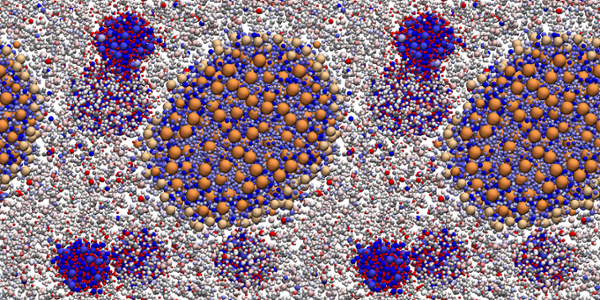
(ed.) Artificial Life III, Boston, MA, USA, pp. Oxford University Press, Oxford (1990)īaas, N.: Emergence, hierarchies and hyper-structures. IEEE Transactions on Systems, Man, and Cybernetics Part B: Cybernetics 26(1), 29–41 (1996)Ĭalvin, W.: The brain as a darwin machine. Complexity 7(6), 18–30 (2002)ĭorigo, M., Maniezzo, V., Colorni, A.: The ant system: Optimization by a colony of cooperating agents. Proceedings of the National Academy of Science 23, 103 (1995)Ĭorning, P.: The re-emergence of ”emergence”: A venerable concept in search of a theory. Santa Fe Institute Studies in the Sciences of Complexity, vol. 19, Addison-Wesley, Reading (1994)Ĭrutchfield, J., Mitchell, M.: The evolution of emergent computation. MIT Press, Cambridge (2004)Ĭrutchfield, J.: Is anything ever new? considering emergence. IEEE Transactions on Robotics 22(6), 1115–1130 (2006)īersini, H.: Whatever emerges should be intrinsically useful. Groß, R., Bonani, M., Mondada, F., Dorigo, M.: Autonomous self-assembly in swarm-bots. Oxford University Press, New York (1997)Ĭariani, P.: Emergence of new signal-primitives in neural networks. Maynard-Smith, J., Szathmary, E.: The Major Transitions in Evolution. Kauffmann, S.: At Home in the Universe: The Search for Laws of Self-Organization and Complexity. Library of Congress Cataloging in Publication Data Main entry under title: Nonlinear phenomena in physics and biology. Princeton University Press, Princeton (March 1994) Goodwin, B.: How the Leopard Changed Its Spots: The Evolution of Complexity. Laughlin, R.: A different universe: reinventing physics from the bottom down. Philosophical perspectives: Mind, causation and world 11, 375–399 (1997)īar-Yam, Y.: A mathematical theory of strong emergence using multiscale variety. This course introduces the basic principles of transport of heat, mass and momentum in.

Artificial Life 9(1), 41–65 (2003)īedeau, M.: Weak emergence. Transport phenomena are important in numerous biological processes. Kubik, A.: Toward a formalization of emergence. Poundstone, W.: Recursive Universe: Cosmic Consequences and the Limits of Scientific Knowledge. The three ingredients are illustrated and discussed within this experimental context. After a brief philosophical plea, we present a simple and illustrative computer thought experiment in which a society of agents evolves a stigmergic collective behavior as an outcome of its greater adaptive value. The presence of natural selection drives us to defend, with many authors, the idea that emergent phenomena can only belong to biology. Finally, for this natural observer to detect and select the collective phenomenon, it needs to do so in rewards of the adaptive value this phenomenon is responsible for. Second this phenomenon has to be observed by a mechanical observer instead of a human one, which has the natural capacity for temporal and/or spatial integration.

First the phenomenon, as usual, requires a group of agents entering in a non-linear relationship and entailing the existence of two semantic descriptions depending on the scale of observation. The contributions in this special issue follow Hans’ legacy in using advanced mathematics to understand complex biological processes.This rather philosophical paper discusses the necessary three ingredients which together allow a collective phenomenon to be described as “emergent”. He has remained at the forefront of multiscale modelling and pattern formation in biology for over half a century, developing models for molecular signalling networks, the mechanics of cellular movements, the interactions between multiple cells and their contributions to tissue patterning and dynamics. The contributions in this special issue follow Hans’ legacy in using advanced mathematics to understand complex biological processes.ĪB - This special issue on “Multiscale phenomena and patterns in biological systems” is an homage to the seminal contributions of Hans Othmer.


N2 - This special issue on “Multiscale phenomena and patterns in biological systems” is an homage to the seminal contributions of Hans Othmer. T1 - Multiscale phenomena and patterns in biological systems: special issue in honour of Hans Othmer


 0 kommentar(er)
0 kommentar(er)
